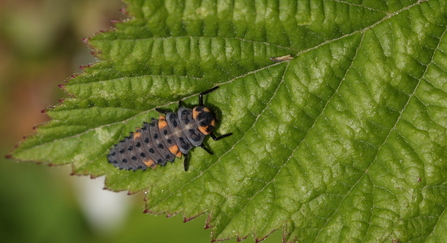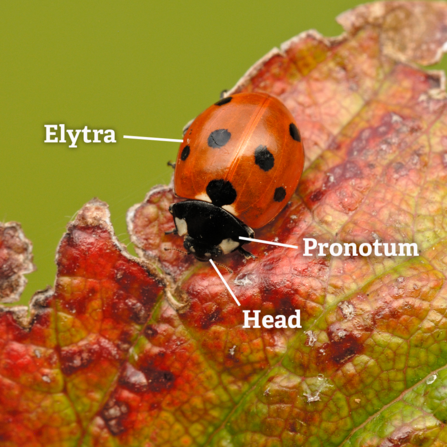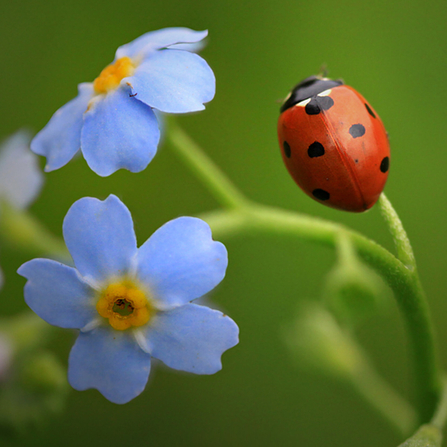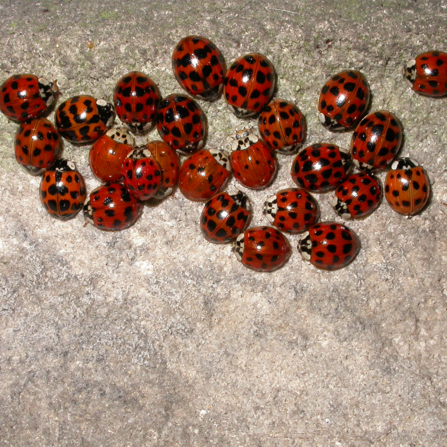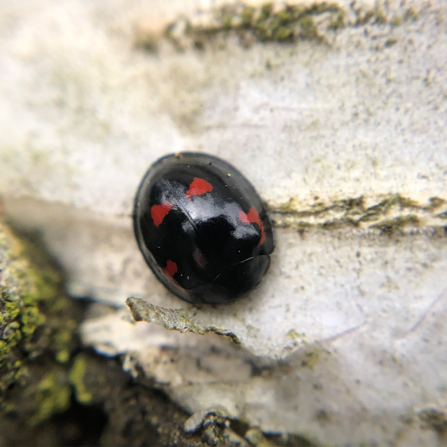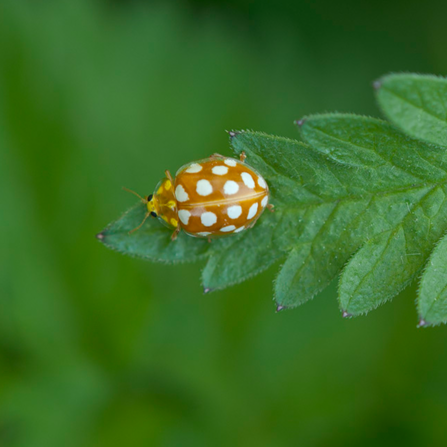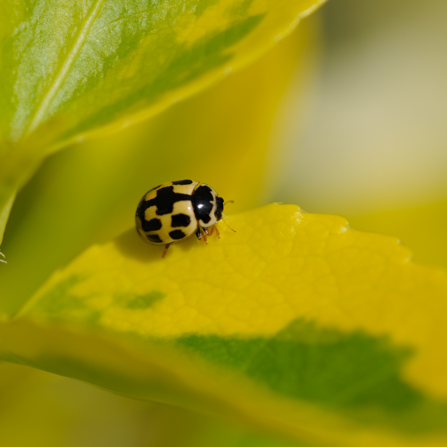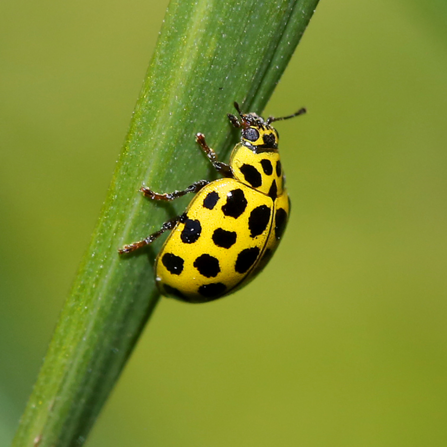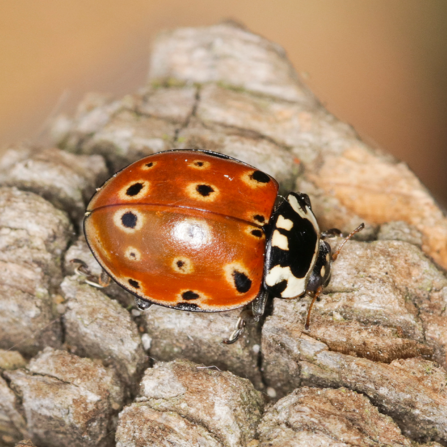The variety of beetles in the UK is staggering – around 4,000 different species! They do lots of important jobs, from shifting dung to pollinating plants. Some are fast and agile hunters, others trundle along at their own pace. They can be black or brightly coloured, plain or patterned. Find a love for beetles and there will always be something new to discover.
Ladybirds are probably our most familiar beetles – and also some of the most popular. They’re known as the gardener’s friend, as many hunt the aphids that occasionally feed on our prized plants. The classic image of a ladybird is the 7-spot, with seven black spots dotted across its bright red back. But there are around 47 species of ladybird in the UK, with a variety of different colours and patterns.


